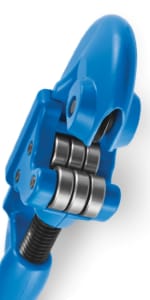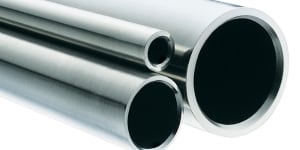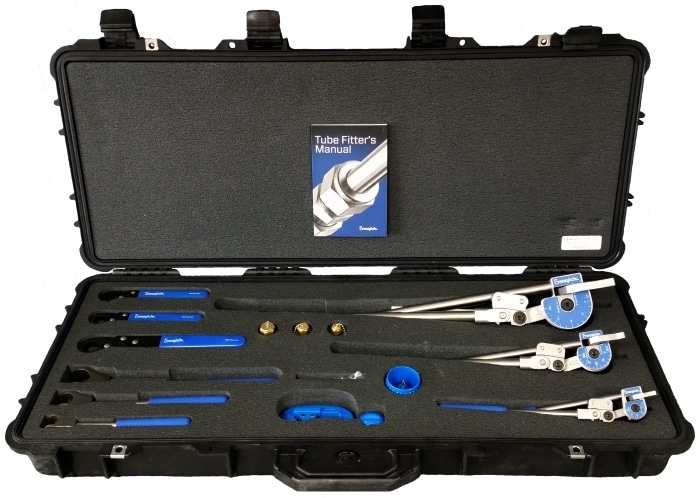Best Practice: Tube Preparation
Best Practice: Tube End Preparation
Though often underestimated, tube end preparation is one of the most critical processes in obtaining an optimal seal in tube fitting connections. Most assemblies will be constructed of short lengths of tube that will have been carefully measured, marked, and cut from longer lengths of tube – the old carpentry adage “measure twice, cut once” applies in principle, but there’s more to it than that.

Tools of the Trade
Tube cutters do not remove material, but rather “push” material aside and down. The Swagelok tube cutter (MS-TC-308) is a robust tool designed to cut tubing materials from 3/16 to 1 inch or 4 to 25mm OD. Using a sharp wheel is the best way to minimize burring; using a dull wheel will both expand and work harden the tube end, making installation more difficult. You know it’s time to replace the cutting wheel when cutting becomes more difficult or the end of the cut tube begins to expand.
If a tube cutter of the proper size is not available, a hacksaw may be used in tandem with a Swagelok tube sawing guide (MS-TSG-16). The tube sawing guide facilitates a square cut and helps to keep the tube from flattening out. Hacksaw blades should have at least 24 teeth per inch.
A Cut Above
Deburring the inside and outside diameter of the tube is necessary to assure the tube fits properly inside the tube fitting body. If burrs are not removed from the OD of the tube, they could prevent the tube from being fully inserted though the nut and ferrules or against the shoulder of the fitting body. ID burrs could also break off and contaminate system media, causing damage to components in other parts of the system by lodging in small holes or vents, or by scratching valve seats or soft seals such as o-rings. Adequate filtration is a pre-requisite for any system, but elimination of burrs and other debris from the tube will help promote a clean, leak-free system.

Get Hands-on
Are any of these tools missing from your shop? Simply drop by any of our facilities and we’ll be happy to show and demonstrate their use to you. Better yet, register for one of our Swagelok Essentials Training sessions and practice using them yourself in one of several practical exercises.
If you’re ready to order these tools, consider the Swagelok Tube Fitter’s Toolbox, essential for any job site, containing a complete set of Swagelok hand tools designed specifically for fabricating tubing systems.



